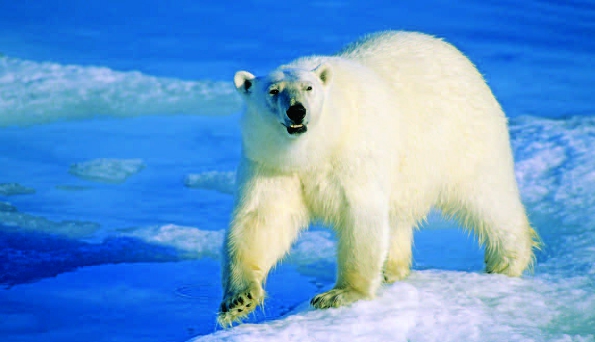For nearly an hour our rubber zodiac headed into the icy teeth of a polar wind, steadily bucking across the angry surface of the Arctic Ocean. Time and time again, our rounded bow plowed into curling waves, pelting us with sheets of numbing salty spray. I clearly remember my excitement, and the discomfort of the journey only heightened the adventure and my expectations.
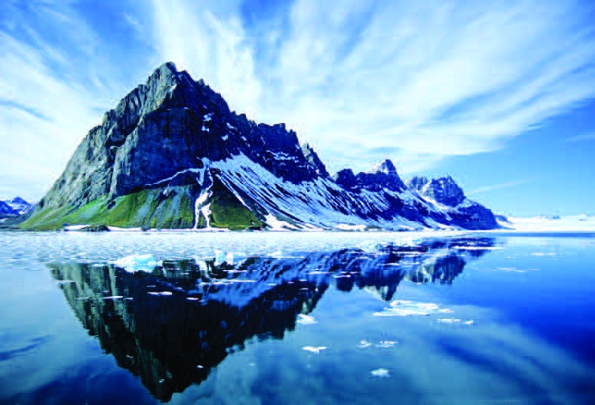
We were skirting the southern shore of the island of Phippsøya at 80° 41’ N, 1550 kilometres north of the Arctic Circle. As we rounded a rocky point and motored into calmer water I saw a polar bear striding along the shoreline. Soon, I counted 11 more bears scattered about the beach. The backbone of a minke whale was stretched along the waterline and several bears were feeding together, chewing on the bony remnants. As we moved closer to the shore, a large adult male, heavily scarred on his muzzle and neck, swam towards us for a short ways and then dove. The bear was underwater for nearly 30 seconds before it surfaced with a ragged chunk of soggy, decaying whale meat, which it carried to the beach and consumed. For several hours we floated quietly offshore, photographing this timeless arctic drama – from death springs life.
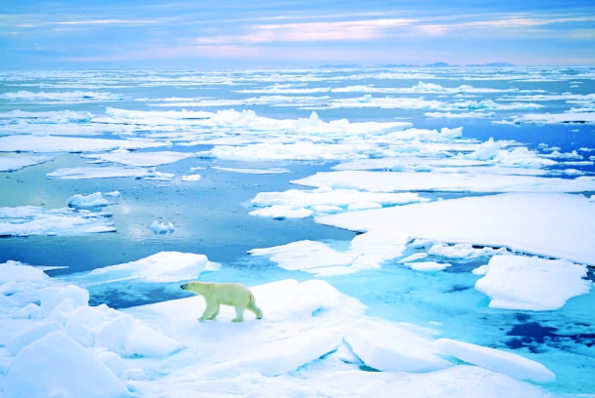
Phippsøya is part of the Svalbard Archipelago, a cluster of arctic islands roughly 600 kilometres north of Norway. The islands offer the best polar bear photography in the world. Add to that tusk-wielding walruses, blubbery bearded seals, riotous cliffs teeming with seabirds, and jagged snowy mountain peaks and you have one of the most outstanding polar destinations on the planet.
I went to the Svalbard Archipelago for the first time in 1997. I had photographed polar bears in Canada for several decades before that and had made 17 autumn and winter trips to Churchill, Manitoba, the self-proclaimed “polar bear capital of the world”. In Churchill, although the bears sometimes wrestle and play together, they spend most of their time curled up asleep, conserving energy, waiting for Hudson Bay to freeze. Svalbard offers a different kind of polar bear experience, one in which you can photograph bears hunting on the pack ice and moving about in dramatic arctic landscapes. Since then, I have made more than 10 trips to the islands and I would rank them among the top locations in the world to photograph wildlife.
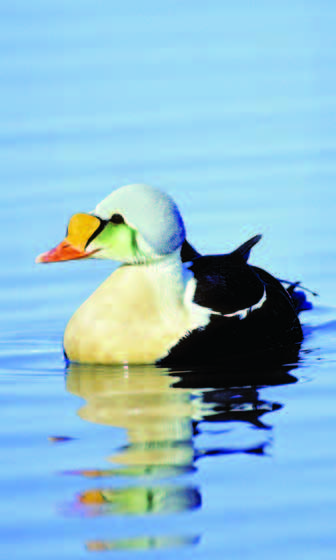 Svalbard, located well north of the Arctic Circle, experiences four months of darkness in the middle of winter and a corresponding period of continuous daylight in the middle of summer. The best months to visit are June and July. As summer advances the pack ice gradually moves farther north beyond the archipelago. The pack ice is where you need to be if polar bears, walruses and bearded seals are your target species. The early months of summer are also best for wildflowers, nesting seabirds and waterfowl. More than three million pairs of seabirds nest in the islands, including large colonies of dovekies, thick-billed murres, black-legged kittiwakes and northern fulmars. The waterfowl species include: barnacle, pink-footed and brant geese, as well as common and king eiders. The king eider is arguably the most colourful bird in the arctic.
Svalbard, located well north of the Arctic Circle, experiences four months of darkness in the middle of winter and a corresponding period of continuous daylight in the middle of summer. The best months to visit are June and July. As summer advances the pack ice gradually moves farther north beyond the archipelago. The pack ice is where you need to be if polar bears, walruses and bearded seals are your target species. The early months of summer are also best for wildflowers, nesting seabirds and waterfowl. More than three million pairs of seabirds nest in the islands, including large colonies of dovekies, thick-billed murres, black-legged kittiwakes and northern fulmars. The waterfowl species include: barnacle, pink-footed and brant geese, as well as common and king eiders. The king eider is arguably the most colourful bird in the arctic.
Every trip to Svalbard begins in the town of Longyearbyen, the main population center in the islands. In summer, Longyearbyen is serviced by daily jet flights from Oslo. The town has a population of 1300 residents and was originally a coal mining community, but ecotourism is now the main industry. There is an assortment of hotels and hostels as well as a municipal campground. Independent travel is possible in Svalbard, but I would not recommend it. To begin with, anyone who plans to hike beyond the town limits must register with the local wildlife office and carry a rifle for protection against polar bears. There have been scattered incidents in the past 20 years where foolish hikers from Europe, with minimal backcountry skills, were seriously or fatally injured by hungry bears. Reaching Svalbard is now so easy it can lull the visitor into thinking that it is a tame destination where minimal precautions are needed. In fact, once you hike beyond the outskirts of Longyearbyen, you are in true arctic wilderness with all of the hazards such travel entails: unpredictable challenging weather, flooded glacial streams, and dangerous predators.
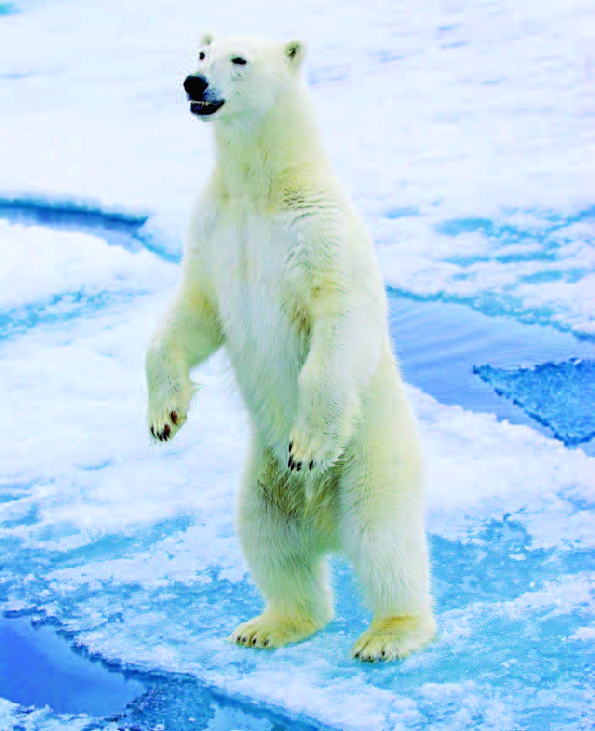
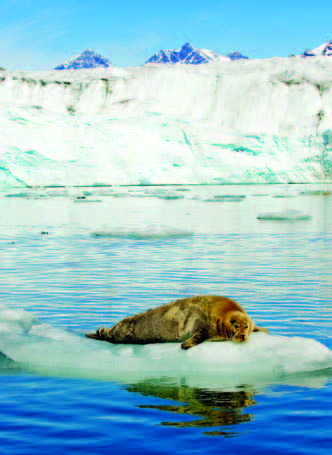 The best option to avoid all of the safety and logistical concerns is to travel on a tour, and the best tours for photography are on ships with hulls especially strengthened to travel in the pack ice. If you Google “Svalbard Ship Trips” you can search a number of operators. The ships are commonly refurbished Russian scientific ships that hold 50 to 75 passengers and offer itineraries of 8 to 10 days for around $6000-7000. Some of the trips are designated specifically for photography and those are the ones to focus on. On a general natural history trip, you will find yourself doing lots of hiking and visiting historical whaling sites where there are few photo opportunities. On a dedicated photo trip the focus is usually on wildlife, and in particular on polar bears, walruses, seals and seabirds, so you’ll get more bang for your buck.
The best option to avoid all of the safety and logistical concerns is to travel on a tour, and the best tours for photography are on ships with hulls especially strengthened to travel in the pack ice. If you Google “Svalbard Ship Trips” you can search a number of operators. The ships are commonly refurbished Russian scientific ships that hold 50 to 75 passengers and offer itineraries of 8 to 10 days for around $6000-7000. Some of the trips are designated specifically for photography and those are the ones to focus on. On a general natural history trip, you will find yourself doing lots of hiking and visiting historical whaling sites where there are few photo opportunities. On a dedicated photo trip the focus is usually on wildlife, and in particular on polar bears, walruses, seals and seabirds, so you’ll get more bang for your buck.
Photography on the ship trips occurs in three situations: from the deck of the ship, from rubber zodiacs, and on shore. A common strategy on these tours is for the expedition staff to search from the bridge with binoculars and when they see a polar bear, walrus or seal on the pack ice, they approach it slowly. When a 75-meter-long metal diesel ship plows through the pack ice its approach is never stealthy or silent. Even so, it’s surprising how often the wildlife allows the ship to get close. Neither bears nor walruses have been hunted in Svalbard for over 50 years, so they are generally unwary and great photographs are possible. Polar bears will frequently approach the ship, even leaning against the hull while stretching their necks upwards towards the line of gawking tourists leaning over the edge gazing down at them. In some instances you can shoot full frame shots of the bears with a wide angle lens. More often, however, you must use telephoto lenses ranging from 300mm to 500mm to capture images of the bears approaching the ship across the jumbled surface of the pack ice, feeding on a seal kill, or striding along the ice edge searching for unsuspecting prey. The ship’s engines are never turned off, and because of this, all of the decks vibrate slightly, so whenever I use a tripod I insulate the feet by covering them with homemade foam booties that dampen the movement. This precaution is especially advisable when you are using shutter speeds less than 1/125 second.
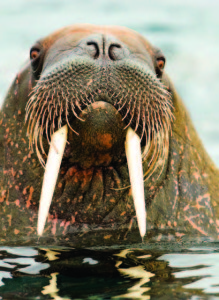 Photographing from a zodiac is especially exciting although the lens options are more limited because you are bobbing around on the waves. Svalbard walruses seem charmingly curious and I have frequently had them approach my zodiac closely enough to capture portraits of the whiskered beasts with an 80-200mm zoom. In a rubber zodiac filled with excited photographers it’s a good idea to use an image-stabilized lens to get the sharpest results. Zodiacs are also a good platform from which to photograph bearded seals sunning on the ice, and the myriad shapes of icebergs.
Photographing from a zodiac is especially exciting although the lens options are more limited because you are bobbing around on the waves. Svalbard walruses seem charmingly curious and I have frequently had them approach my zodiac closely enough to capture portraits of the whiskered beasts with an 80-200mm zoom. In a rubber zodiac filled with excited photographers it’s a good idea to use an image-stabilized lens to get the sharpest results. Zodiacs are also a good platform from which to photograph bearded seals sunning on the ice, and the myriad shapes of icebergs.
On trips to shore, which are made on every tour, there are great opportunities to photograph crimson woolly louseworts, the bobbing heads of yellow arctic poppies, and the delicate cream-coloured blossoms of saxifrages. Also, there are nesting shorebirds and arctic terns to focus on, as well as ptarmigan and the occasional inquisitive arctic fox. On every trip ashore the group is accompanied by one or more leaders, carrying highpowered rifles for protection against a polar bear attack. Such dangerous encounters are exceptionally rare and I’ve never had an incident on any of my trips.
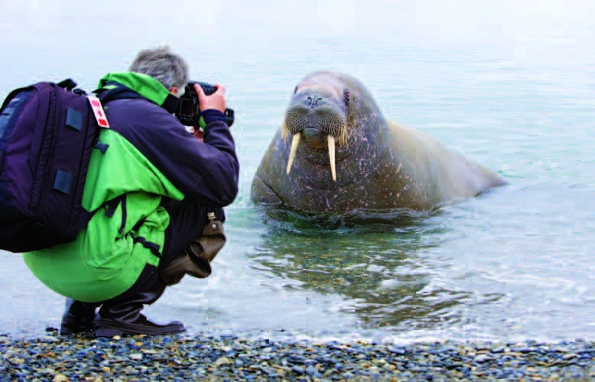
One of the great delights of traveling to the Arctic in the summer months is the quality of the light. During those months, the sun rides near the horizon for much of the day and throughout the night, often infusing the light with a warm amber glow that photographers affectionately refer to as “sweet light”. Even when there is no wildlife around, you can wander the decks of the ship capturing the various textures in the pack ice, the distant profiles of snow-capped mountains, and the glorious patterns in the cloud-cluttered skies.
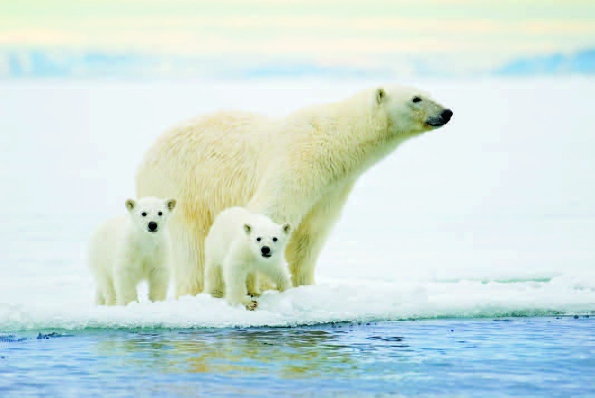
As climate change impacts the planet, the Arctic and its wildlife are frequently in the headlines. The rise in global temperature is currently greatest in the polar regions and these areas are predicted to be greatly altered in the foreseeable future. Now is the time to see the Arctic and if you can only visit one location, Svalbard is the place to go.
Article by Wayne Lynch
| PHOTONews on Facebook | PHOTONews on Twitter |



